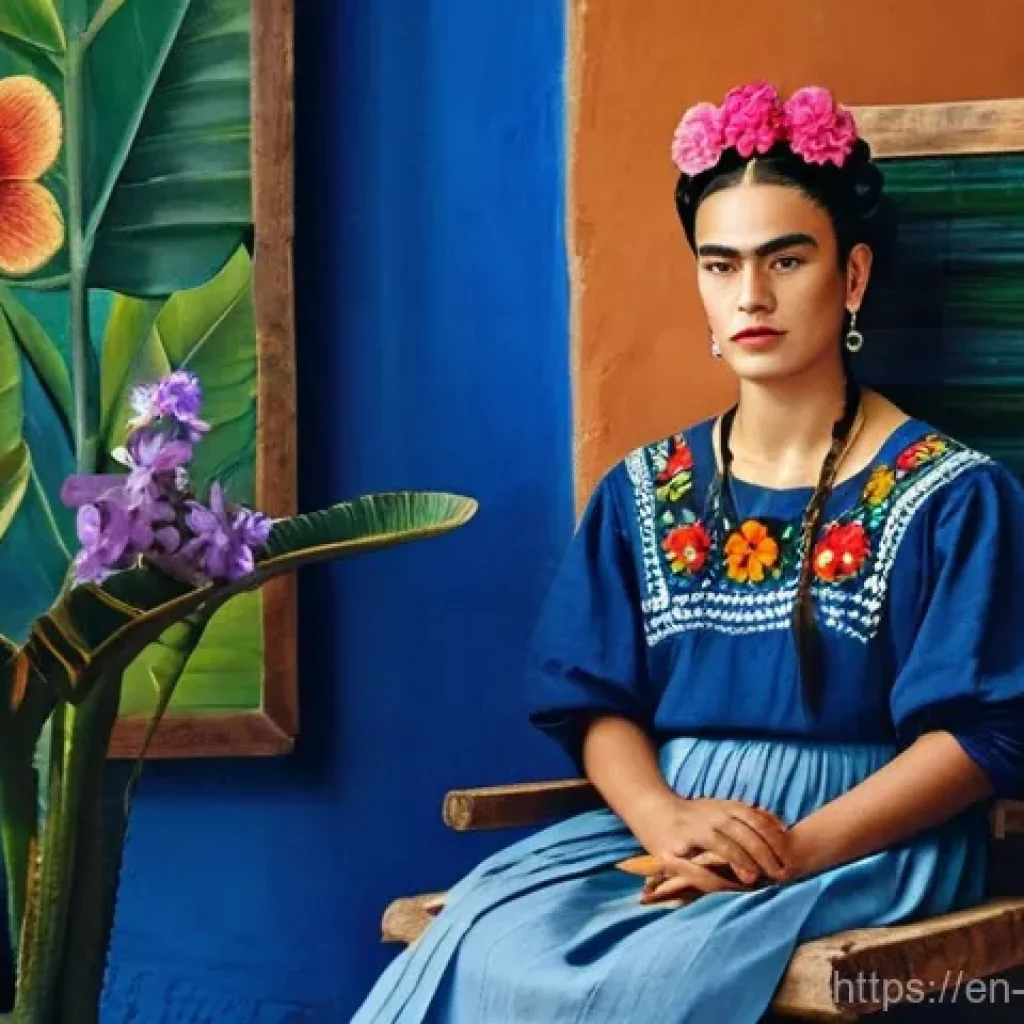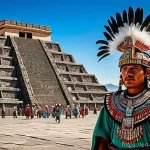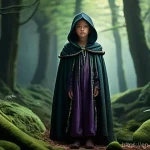Hey there, fellow art aficionados and culture explorers! Have you ever found yourself completely mesmerized by artists who truly poured their soul onto the canvas, defying norms and leaving an indelible mark on history?
I know I have. There’s this incredible magic in art that transcends generations, speaking a universal language that tugs at our emotions and broadens our understanding of the world.
In an age where digital trends come and go in a blink, it’s those timeless narratives, those rich legacies, that truly stick with us. As someone who’s personally spent countless hours immersed in the vibrant world of art history, seeking out the stories that don’t just inform but deeply resonate, I’m always thrilled to uncover and share these gems.
The profound and lasting impact that artists have on society is a topic I’m incredibly passionate about, and it’s why I’m so excited to shine a spotlight on two of Mexico’s most iconic and truly unforgettable artistic powerhouses.
Their saga is far more than just brushstrokes; it’s a swirling tapestry of passion, resilience, and a love story that continually challenges conventional wisdom.
When we talk about Mexican art, two colossal figures instantly dominate the landscape, names that evoke an immediate sense of vibrant color, raw emotion, and a fiery, unyielding spirit: Frida Kahlo and Diego Rivera.
Their lives weren’t just a series of artistic endeavors; they were an epic, tumultuous love affair intertwined with deep political conviction and boundless creative genius, a narrative that continues to absolutely captivate people globally.
I’ve always been utterly fascinated by how their individual brilliance both fiercely clashed and beautifully converged, shaping a legacy that feels as relevant and powerful today as it ever was.
From Frida’s deeply personal self-portraits, offering a raw, unvarnished window into her very soul and her pain, to Diego’s monumental murals, vividly depicting Mexico’s rich history and the struggles of its people, their influence is simply undeniable.
Let’s peel back the layers and uncover their fascinating world in more detail!
A Shared Canvas, A Turbulent Love
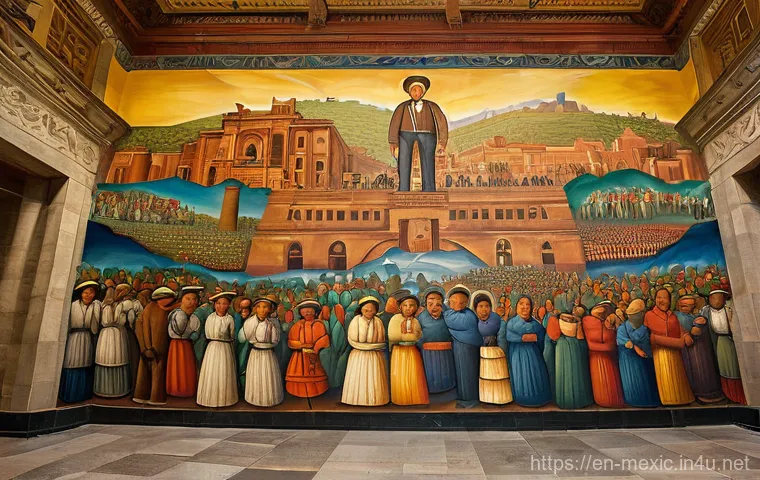
You know, it’s truly wild to think about a love story that was as intricate and vibrant as the art it inspired. Frida Kahlo and Diego Rivera’s relationship was anything but conventional, and honestly, that’s what makes it so endlessly fascinating to me. I’ve always been captivated by the sheer intensity of their connection – a tempestuous dance between two colossal artistic egos. When I first delved into their biographies, I couldn’t help but feel a deep sense of understanding for the push and pull, the devotion mixed with the inevitable heartbreaks. It wasn’t just a marriage; it was a partnership of spirits, profoundly influencing each other’s artistic output, sometimes for better, sometimes for worse. Their love story, filled with passionate highs and devastating lows, became a central theme in Frida’s intensely personal work, while Diego’s monumental murals often subtly echoed the political and personal climate they navigated together. I’ve often wondered if such raw, unbridled emotion is a prerequisite for creating art that truly transcends its time. Their lives were a public spectacle, yet their deepest feelings were laid bare only through their brushes and palettes, offering us an intimate glimpse into a bond that defied societal norms and artistic conventions.
The Sparks That Flew: Their Unconventional Romance
The tale of how Frida and Diego met is almost legendary, a story I find myself recounting often to fellow art enthusiasts. It all started when a young, ambitious Frida, still recovering from a devastating bus accident, brought her paintings to the established master, Diego Rivera, for critique. Imagine the scene: this formidable, larger-than-life figure, and this fiercely determined young woman, both brimming with talent and conviction. It wasn’t long before an undeniable spark ignited between them. Their age difference (she was 22, he was 42) and their vastly different temperaments only added to the allure and complexity of their relationship. I’ve always found it so incredibly inspiring how Frida, despite her physical pain and vulnerabilities, approached Diego with such courage and self-assurance. Their union, famously described by her parents as a marriage between an “elephant and a dove,” was a whirlwind of shared political ideals, artistic passion, and relentless infidelity. Yet, through it all, there was an unwavering respect for each other’s art and intellect that, in my opinion, formed the bedrock of their enduring connection. It’s a reminder that love doesn’t always fit into neat boxes; sometimes, it’s a glorious, messy, beautiful explosion.
Artistic Symbiosis: When Worlds Collided
What truly fascinates me about Frida and Diego’s relationship, beyond the dramatic personal narrative, is how their artistic worlds intertwined and sometimes collided. While their styles were distinctly their own – Frida’s intimate self-portraits vs. Diego’s grand historical murals – they were each other’s fiercest critics and most ardent supporters. I’ve read countless accounts of how they would spend hours discussing art, politics, and life, constantly challenging each other’s perspectives. It’s truly incredible to think about the intellectual and creative energy that must have buzzed through their home, Casa Azul. Diego recognized Frida’s genius early on, praising her work when many others didn’t quite grasp its depth. And Frida, in turn, deeply admired Diego’s monumental vision and technical prowess. I often wonder how much of their individual breakthroughs were spurred by their constant dialogue and sometimes, their fiery disagreements. Their relationship was a living, breathing testament to the idea that true collaboration doesn’t always mean working on the same canvas, but rather inspiring, provoking, and elevating each other’s unique journeys. This dynamic, I believe, contributed significantly to the profound resonance of their individual works.
Frida’s Unfiltered Soul: Art as Autobiography
Stepping into Frida Kahlo’s artistic world feels less like viewing paintings and more like reading a diary etched in vibrant colors and raw emotion. Whenever I visit an exhibition of her work, I’m always struck by the sheer honesty and vulnerability she poured onto her canvases. It’s an intensely personal experience, almost as if she’s speaking directly to you through her brushstrokes. Frida didn’t shy away from depicting her pain, her passions, or her identity, and that, for me, is the ultimate form of artistic bravery. Her self-portraits, which form the cornerstone of her oeuvre, aren’t just likenesses; they are profound psychological explorations. She used her art as a means of processing the immense physical and emotional suffering she endured throughout her life, transforming personal tragedy into universal human experience. I’ve personally spent hours analyzing the symbolism in her work, from the intricate details of her traditional Tehuana dresses to the unsettling presence of her internal organs, and each time, I discover a new layer of meaning. It’s this unflinching gaze inward, coupled with her extraordinary talent, that makes her art so incredibly powerful and enduring. She wasn’t just painting; she was surviving, expressing, and ultimately, triumphing through her art.
Pain and Resilience: The Body as a Battlefield
Frida’s life was marked by immense physical suffering, a reality that profoundly shaped her artistic vision. From a childhood bout with polio to the catastrophic bus accident that left her with lifelong pain and multiple surgeries, her body became a recurring motif in her work. I remember seeing “The Broken Column” for the first time and being absolutely floored by its raw depiction of agony and resilience. It’s not just a painting; it’s a visceral scream of pain, yet simultaneously an incredible testament to the human spirit’s capacity to endure. She presented her body, often in various states of dismemberment or medical intervention, not as an object of pity but as a site of intense personal and political struggle. This unflinching portrayal of her physical and emotional wounds was revolutionary, especially for a female artist of her time. I often reflect on how she used art as a form of therapy, transforming her personal anguish into something beautiful and profoundly moving. Her ability to confront and articulate her pain with such vivid imagery offers a powerful lesson in finding strength and expression even in the darkest of times. It’s a message that deeply resonates with me, and I’m sure, with countless others who have faced their own battles.
Identity and Heritage: Embracing Her Roots
Beyond her personal suffering, Frida Kahlo’s art is a vibrant celebration of her Mexican identity and heritage. She famously declared herself a daughter of the Mexican Revolution, and her work is steeped in the rich visual traditions, folklore, and political fervor of her homeland. I’ve always admired how she embraced her mestiza heritage, often depicting herself in traditional Tehuana attire, which was a powerful statement of cultural pride and resistance during a time of increasing Western influence. Her paintings are a tapestry woven with indigenous symbols, pre-Columbian artifacts, and vivid natural imagery that speak volumes about her deep connection to Mexico. When I look at her works, I don’t just see a woman; I see a nation’s history, its struggles, and its vibrant spirit reflected in every brushstroke. This strong sense of cultural rootedness gives her art a timeless quality, making it universally relatable while remaining distinctly Mexican. It’s a powerful example of how art can be a vehicle for cultural preservation and a defiant affirmation of one’s roots in a world that often pressures conformity. Frida’s unwavering commitment to her identity is, for me, one of her most inspiring legacies.
Diego’s Grand Narratives: Murals for the Masses
Shift your gaze from Frida’s intimate canvases to Diego Rivera’s monumental murals, and you’re transported to an entirely different scale of artistic ambition. Diego wasn’t just painting; he was literally painting history onto the walls of public buildings, making art accessible to everyone. I’ve always been profoundly impressed by the sheer scope and social impact of his work. It’s not often you find an artist whose vision is so grand that it reshapes public spaces and speaks directly to the collective consciousness of a nation. His murals, with their sweeping narratives and powerful symbolism, served as a visual history book for the Mexican people, particularly those who were illiterate. When I first encountered photographs of his murals, I was struck by their dynamic energy and the intricate details that told stories of revolution, labor, and indigenous heritage. It’s a stark contrast to the more introspective nature of Frida’s art, yet equally vital in its contribution to Mexican culture and art history. Diego believed art should serve a purpose, not just decorate a wall, and his unwavering commitment to this belief is palpable in every massive stroke of paint. He really did use art as a weapon for change and education, something I deeply admire.
History Etched in Stone: Reclaiming Mexico’s Story
Diego Rivera’s murals are, in essence, an epic visual chronicle of Mexico’s past, present, and hoped-for future. He took on the monumental task of reclaiming and rewriting history from the perspective of the Mexican people, moving away from colonial narratives. I’ve often thought about the courage it must have taken to challenge established historical accounts and present a counter-narrative so boldly and publicly. His murals depict everything from pre-Columbian civilizations and the Spanish conquest to the Mexican Revolution and the struggles of the working class. It’s like stepping into a living history book where every figure, every scene, tells a crucial part of the national story. One of his most famous works, “The History of Mexico” at the National Palace, is a breathtaking example of this. When you stand before it, you can’t help but feel the weight of centuries of struggle and the enduring spirit of a nation. For me, it’s not just a historical artwork; it’s a powerful act of national affirmation and a testament to the idea that art can be a potent tool for cultural memory and identity formation. He gave voice to the voiceless through his grand public canvases.
Social Commentary: Art for the People
Beyond depicting history, Diego Rivera was a master of social commentary, using his murals to critique injustice and advocate for the working class. His strong communist convictions were woven into the very fabric of his art, making him a true “people’s artist.” I’ve always found it incredibly inspiring how he leveraged his talent to highlight the struggles of laborers, farmers, and indigenous communities, giving them dignity and visibility on a grand scale. He wasn’t afraid to use his art to challenge the powerful, expose exploitation, and envision a more equitable society. This commitment to social justice is perhaps nowhere more evident than in his controversial “Man at the Crossroads” mural for Rockefeller Center, which famously included a portrait of Vladimir Lenin and led to its destruction. While tragic, it solidified his reputation as an artist who would not compromise his beliefs. It’s a powerful reminder that art can be a catalyst for dialogue and, sometimes, for confrontation. Diego believed that art should serve the masses, not just the elite, and his monumental works stand as enduring symbols of this unwavering commitment. This deeply held belief is something I continually reflect on in my own explorations of art’s role in society.
Beyond the Easel: Their Political Passions
It’s impossible to talk about Frida Kahlo and Diego Rivera without delving into their profound political convictions. Their art wasn’t created in a vacuum; it was deeply intertwined with their fervent belief in social justice, communism, and Mexican nationalism. For them, art was a tool, a weapon, and a voice for the voiceless. I’ve always been fascinated by how their personal and artistic lives were so thoroughly enmeshed with their political ideals. They weren’t just passively observing the world; they were actively trying to change it, one brushstroke or mural at a time. It’s a powerful testament to the idea that art can be a force for social change, and that artists can be vital agents in shaping public discourse. Their shared commitment to revolutionary ideals formed a crucial bond between them, even amidst their turbulent personal lives. I often find myself pondering the intensity of their belief system and how it fueled their creative output. This unwavering dedication to their political vision distinguishes them not just as artists, but as significant cultural and political figures of the 20th century. Their legacy extends far beyond galleries and museums, echoing in the ongoing conversations about art’s role in activism.
Revolutionary Ideals: A Shared Vision
Both Frida and Diego were passionate communists, deeply committed to the ideals of social equality and workers’ rights, especially in post-revolutionary Mexico. Their home, Casa Azul, was a hub for political discussions and meetings, hosting figures like Leon Trotsky. I’ve always found it incredibly compelling how their shared political vision acted as a foundational element of their relationship, often bridging the gaps created by their personal complexities. They believed art should serve the people, educate them, and inspire them to action. Diego’s murals, as we’ve discussed, were explicit in their political messaging, glorifying the working class and critiquing capitalist exploitation. Frida, while more personal in her art, subtly wove political statements into her self-portraits, often wearing traditional attire that symbolized national pride and resistance against Western cultural imperialism. It was a shared intellectual and ideological journey that profoundly influenced every aspect of their lives and work. This collective pursuit of a revolutionary ideal, for me, elevates their story beyond that of mere artists; they were cultural architects striving to build a better world, one image at a time, and I find that truly inspiring.
Communism, Controversy, and Creative Freedom
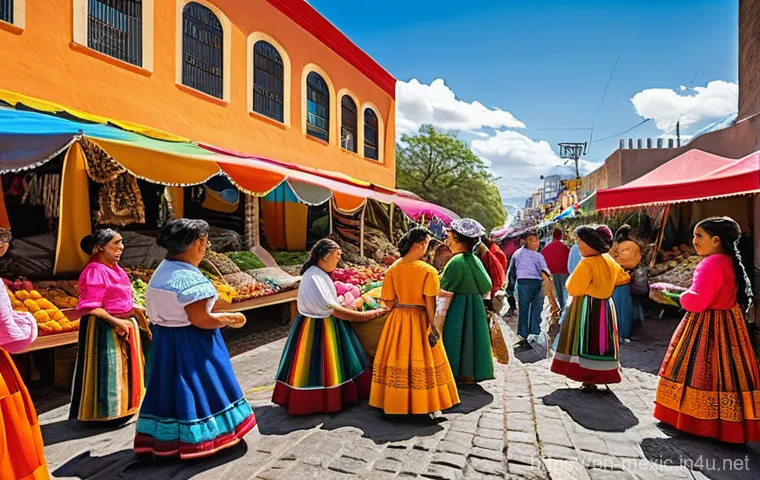
Their unwavering commitment to communism often brought them into direct conflict with powerful institutions and conservative elements, both in Mexico and the United States. Diego Rivera, in particular, faced significant controversy, most notably with the Rockefeller family. I still remember reading about the scandal surrounding his mural “Man at the Crossroads” at Rockefeller Center. The inclusion of Lenin’s portrait was a direct challenge to his patrons, a move that showcased his uncompromising artistic integrity, even at great personal and professional cost. This incident, while leading to the mural’s destruction, cemented his reputation as an artist who would prioritize his political convictions over commercial gain. Frida, though less overtly political in her art, was equally staunch in her beliefs, refusing to cede ground on issues of identity and social justice. They were never shy about expressing their opinions, attending rallies, and associating with prominent communist figures. This fearless pursuit of creative and political freedom, despite the backlash, is something that deeply resonates with me. It’s a powerful reminder that true artists often challenge the status quo, even if it means enduring controversy and criticism for their unwavering principles. Their story is a masterclass in staying true to your convictions.
The Echoes of Influence: A Lasting Legacy
It’s truly incredible to witness how the art and lives of Frida Kahlo and Diego Rivera continue to resonate so powerfully in our contemporary world. Their influence isn’t just confined to art history textbooks; it permeates popular culture, fashion, activism, and scholarly discourse, proving that true artistic genius transcends time. I’ve seen countless examples of their impact, from runway collections inspired by Frida’s iconic style to protest art echoing Diego’s monumental social commentaries. Their ability to blend the deeply personal with the universally political, the local with the global, makes their work perpetually relevant. It’s a testament to the raw authenticity and revolutionary spirit embedded in every piece they created. As someone who constantly explores how art shapes society, I find their ongoing legacy to be one of the most compelling narratives in modern art. They didn’t just paint pictures; they painted a vision, a passion, and a defiant spirit that continues to inspire new generations of artists, activists, and thinkers to question, create, and challenge. Their lives, as much as their art, serve as a beacon for those who dare to live authentically and passionately.
Contemporary Reverberations: Their Art Today
The contemporary art scene, fashion world, and social movements are still profoundly influenced by Frida and Diego. I’ve seen so many artists cite Frida as an inspiration for her unflinching honesty and her celebration of self-identity, particularly among women and marginalized communities. Her image has become an icon of strength, resilience, and unapologetic self-expression. Similarly, Diego’s legacy lives on in the resurgence of muralism as a powerful tool for community engagement and political statement. Artists around the globe are still learning from his monumental scale and his commitment to public art. Their combined impact extends far beyond the canvas, influencing everything from academic studies on gender and post-colonialism to popular culture references in film and music. It truly amazes me how their work continues to spark new conversations and interpretations, proving that great art never truly dies; it simply evolves and adapts to new contexts. It’s a vibrant, living legacy that constantly invites us to look deeper and engage with their powerful narratives on a fresh level, and I find that truly exciting.
Inspiring Generations: The Ongoing Dialogue
What makes Frida and Diego’s legacy so enduring, in my opinion, is their ability to continually inspire dialogue across generations and cultures. Their lives were so rich with drama, passion, and conviction that they offer endless points of entry for discussion—about art, love, politics, identity, and resilience. I often find myself in conversations with fellow art lovers, each of us sharing a different perspective or connection to their story, and that’s the beauty of it. Frida’s story, in particular, has become a source of immense empowerment for women worldwide, inspiring them to embrace their unique identities and voice their truths. Diego’s murals continue to provoke thought on social justice and the role of art in political movements. Their work invites us not just to admire, but to question, to feel, and to reflect on our own place in the world. It’s this ongoing, dynamic engagement that solidifies their place as truly iconic figures whose influence will undoubtedly continue for centuries to come. They created a language that transcends time, and we are all still learning to speak it, each in our own way. That, to me, is the mark of truly transformative art.
Experiencing Their Legacy: Where to Dive Deeper
If you’re anything like me, after learning about such fascinating figures, you’re probably itching to experience their world firsthand. Luckily, Frida Kahlo and Diego Rivera left behind an incredible treasure trove of places that allow us to step directly into their lives and witness their art in its original context. I’ve always felt that there’s a unique magic in standing in the very spaces where artists created, absorbing the atmosphere and imagining their processes. Mexico City, in particular, is an absolute pilgrimage site for anyone captivated by their story, but their influence stretches far beyond its vibrant streets. From intimate homes brimming with personal artifacts to colossal public murals that dominate cityscapes, there are ample opportunities to deepen your connection with these two artistic powerhouses. It’s more than just visiting a museum; it’s an immersive journey into the heart of their creative and personal worlds, offering an unparalleled insight into the minds that shaped so much of 20th-century art. Trust me, these experiences will leave an indelible mark on your artistic soul.
Iconic Sanctuaries: Museums and Homes
For a truly immersive experience into Frida and Diego’s lives, a visit to their former homes and key museums is absolutely essential. The most famous, of course, is Frida’s “Casa Azul” (The Blue House) in Coyoacán, Mexico City, now the Frida Kahlo Museum. I’ve been there, and let me tell you, walking through those vibrant blue walls, seeing her bed, her studio, and her personal effects, feels incredibly intimate. It’s like she just stepped out for a moment. Similarly, the Anahuacalli Museum, designed by Diego Rivera to house his vast collection of pre-Columbian art, offers a fascinating glimpse into his aesthetic and intellectual world. For a deeper dive into their works, the Dolores Olmedo Museum (also in Mexico City) boasts one of the largest collections of their paintings. These places aren’t just sterile galleries; they are living testaments to their creative spirits and their enduring connection to Mexican culture. Every artifact, every brushstroke, tells a story, and you can practically feel their presence. It’s an experience that goes beyond simply looking at art; it’s about feeling the pulse of their extraordinary lives.
Beyond the Galleries: Their Public Works
While the museums offer intimate insights, a truly complete understanding of Diego Rivera, especially, requires stepping out into the public spaces where his monumental murals literally adorn the city. His grand public works are a cornerstone of Mexican cultural identity and are free for everyone to experience. The National Palace in Mexico City, with “The History of Mexico” mural cycle, is an absolute must-see. The sheer scale and historical narrative are breathtaking. Then there’s the Palacio de Bellas Artes, where you can see his iconic “Man, Controller of the Universe,” a recreation of the destroyed Rockefeller Center mural. These aren’t just paintings on a wall; they are powerful social and political statements woven into the very fabric of the city. I’ve always found it incredibly moving to witness how art can so profoundly shape public spaces and inform collective memory. It’s a powerful reminder of Rivera’s vision for art as a democratic force, accessible to all, and an enduring testament to his genius. You really haven’t fully appreciated Diego until you’ve stood before one of his murals and felt its immense power.
| Location / Institution | Key Focus / Significance | What to See |
|---|---|---|
| Frida Kahlo Museum (Casa Azul) | Frida Kahlo’s former home and studio | Frida’s personal belongings, studio, early works, unique atmosphere |
| Museo Mural Diego Rivera | Home to one of Diego’s most famous murals | “Dream of a Sunday Afternoon in Alameda Park” mural |
| Palacio Nacional (National Palace) | Diego Rivera’s epic historical murals | “The History of Mexico” mural cycle by Diego Rivera |
| Palacio de Bellas Artes | Important works by both artists | Diego Rivera’s “Man, Controller of the Universe”, works by Frida Kahlo |
| Dolores Olmedo Museum | Extensive collection of both artists’ works | Large collection of Frida Kahlo and Diego Rivera paintings |
Wrapping Up
Wow, what a journey we’ve taken through the vibrant, tumultuous lives of Frida Kahlo and Diego Rivera! I genuinely hope you’ve felt as captivated as I always am by their incredible story.
Their love, their art, and their unwavering political passions were all interwoven into a tapestry that continues to inspire and challenge us today. It’s a powerful reminder that true art often emerges from the deepest parts of the human experience, unapologetically raw and incredibly resonant.
Thank you for joining me on this deep dive into their enduring legacy!
Good-to-Know Information
Here are some insider tips and fascinating tidbits I’ve picked up while exploring the world of Frida and Diego, perfect for anyone planning a deeper dive or simply curious:1.
If you’re dreaming of visiting Frida Kahlo’s Casa Azul (The Blue House) in Mexico City, please, *please* book your tickets online well in advance. I’ve heard too many stories, and even experienced a near-miss myself, where hopeful visitors were turned away because tickets sell out months ahead, especially during peak seasons and weekends. It’s a truly popular spot, and you definitely don’t want to miss out on walking through her incredible home and studio. Aim to book 1-3 months out, and definitely don’t expect to just walk up and buy tickets on the day!
2.
While Frida’s personal style is iconic and easily recognizable, her commitment to traditional Tehuana clothing was more than just fashion; it was a powerful statement of cultural pride and resistance. She often embraced her indigenous roots through her attire, which played a significant role in defining her public persona and her art. This deliberate choice was a statement against Western cultural norms and celebrated her Mexican heritage.
3.
Diego Rivera’s monumental murals often include subtle self-portraits or hidden figures. Keep an eye out for these artistic “Easter eggs” when you visit his public works, like those in the National Palace or Palacio de Bellas Artes. It’s like a fun treasure hunt that adds an extra layer of engagement to his grand narratives and offers a more personal connection to the artist behind the massive canvases.
4.
Their tumultuous relationship was often considered scandalous for its time, marked by infidelities, divorce, and remarriage. However, it’s crucial to remember that their intellectual and artistic bond remained incredibly strong. They were each other’s fiercest critics and biggest supporters, constantly influencing and inspiring each other’s work, which is evident in the depth and passion of their individual pieces.
5.
Beyond the major museums, consider exploring the charming Coyoacán neighborhood where Casa Azul is located. It’s a vibrant area filled with markets, plazas, and street art that still carries the bohemian spirit Frida cherished. Taking a moment to simply soak in the atmosphere, perhaps enjoying some churros, can give you a deeper sense of the world they inhabited outside the museum walls.
Key Takeaways
Reflecting on the lives of Frida Kahlo and Diego Rivera, what really sticks with me is the sheer, unbridled passion that fueled every facet of their existence.
Their love story, for all its complexities and heartbreaks, was undeniably a shared canvas where two colossal artistic spirits deeply influenced one another, shaping their individual journeys in profound ways.
Frida’s art stands as an unwavering testament to personal resilience, transforming immense suffering into universal narratives of identity and strength, while Diego’s monumental murals served as a powerful, public history book for Mexico, advocating for social justice and reclaiming national identity through art for the masses.
Both were fiercely committed to their political convictions, seeing art not just as an aesthetic pursuit but as a potent tool for social change and a voice for the marginalized.
Ultimately, their combined legacy continues to resonate globally, inspiring new generations to embrace authenticity, challenge conventions, and use their voices—artistic or otherwise—to make a meaningful impact on the world, proving that true artistry transcends time and continues to spark vital conversations.
Frequently Asked Questions (FAQ) 📖
Q: What made Frida Kahlo and Diego Rivera’s artistic styles so revolutionary and impactful, both individually and as a duo?
A: Oh, this is such a fantastic question! When I first delved into their work, I was absolutely struck by how uniquely powerful each of their voices was, yet how intrinsically linked they became.
Frida, bless her soul, was a pioneer in self-portraiture, not just in capturing her likeness, but in baring her raw, unvarnished soul on canvas. Her art was a deeply personal narrative of her pain, her resilience, her identity – things like her physical suffering, her vibrant Mexican heritage, and her complex relationships.
I’ve always felt like looking at a Frida painting is like peering directly into her diary; it’s intensely emotional and profoundly honest, which was truly revolutionary for her time.
Diego, on the other hand, was a master of the monumental. His murals weren’t just paintings; they were sweeping, epic stories etched onto public walls, depicting Mexico’s rich history, its revolution, and the struggles of its indigenous people.
He had this incredible ability to make history palpable and accessible to everyone. What’s utterly fascinating is how these two distinct approaches, one so intimately personal and the other so grandly public, together painted a complete picture of Mexico.
They truly redefined what art could be, showing us that it could be both a personal confessional and a powerful tool for social commentary. It’s a contrast I constantly find myself pondering, and honestly, it’s what makes their collective legacy so enduring.
Q: Their relationship was famously passionate and tumultuous. How did this dynamic, with all its highs and lows, influence their creative output and public image?
A: You know, their love story is almost as legendary as their art, and I truly believe it fueled so much of their creative fire. As someone who’s been captivated by their biographies, I can tell you it was anything but conventional!
Their marriage was a whirlwind of profound love, intense jealousy, mutual admiration, and frequent infidelities on both sides. Frida’s paintings, especially her self-portraits, often became a canvas for her emotional turmoil stemming from her relationship with Diego, her heartbreak, and her enduring devotion to him despite everything.
She captured the anguish and the passion with an almost brutal honesty that still resonates deeply today. Diego, in turn, found in Frida not just a wife, but a muse and an intellectual equal who challenged him constantly.
While his large-scale murals rarely depicted their personal relationship directly, Frida’s unwavering presence in his life and their shared political ideals certainly informed his perspective.
Their public image was also undeniably shaped by this tempestuous connection. They were seen as a power couple, bohemian and fiercely independent, living life on their own terms.
This dramatic personal life actually added layers of intrigue to their artistic narratives, making them not just artists, but living legends whose passion was as boundless as their talent.
It’s a testament to their deep, almost spiritual connection that despite everything, they always returned to each other.
Q: Beyond their art, Frida and Diego were also deeply committed to their political ideals. How did their activism intertwine with their artistic vision, and what message were they trying to convey?
A: Absolutely, their political convictions were just as vibrant and unyielding as their brushstrokes, and honestly, you can’t truly understand their art without understanding their activism!
I’ve always found it inspiring how seamlessly they wove their beliefs into every fiber of their creative output. Both Frida and Diego were staunch communists and fierce proponents of Mexican culture and identity, especially after the Mexican Revolution.
Diego, with his monumental murals, used public spaces to educate and empower the masses, often depicting the exploitation of workers, the grandeur of Mexico’s pre-Hispanic past, and the promise of a socialist future.
His art was a direct, unapologetic call to action, a visual manifesto for social justice. Frida’s political expression, while more subtle and personal, was equally potent.
Her embracing of traditional Mexican dress wasn’t just fashion; it was a political statement, a proud assertion of her heritage against European influence.
Many of her self-portraits, while deeply personal, also carried underlying political messages, subtly challenging societal norms and advocating for a more just world.
They both believed art wasn’t just for aesthetics; it was a powerful tool for social change, for preserving national identity, and for fighting for the rights of the marginalized.
Their lives and art were a unified, passionate declaration for a better Mexico, and honestly, that dedication to their ideals is a huge part of why their legacy continues to inspire me so much.
